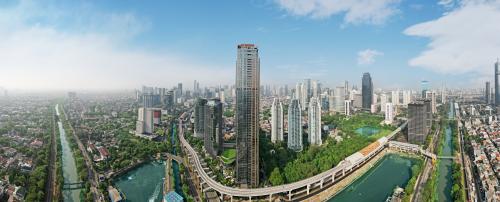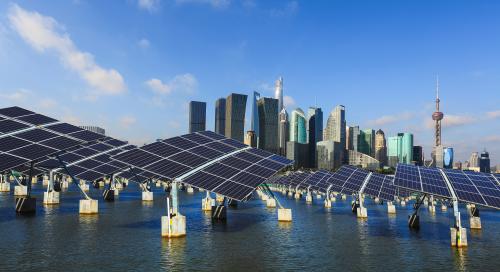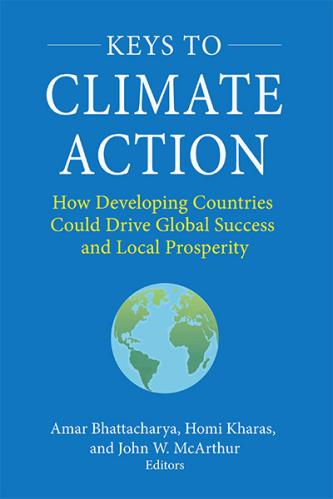Characterized by its long coastline, massive deforestation, food insecurity, and high reliance on coal and fossil fuels, Indonesia is particularly vulnerable to the impact of climate change. While it is critical to accelerating green transition for its population, Indonesia’s progress in achieving net zero also bears global significance due to the country being the fourth largest emitter of greenhouse gases. Regardless, concrete effort and progress on climate transition in Indonesia have been slow. Having various economic development priorities, Indonesia faces a substantial financing gap for its decarbonization agenda stemming from limited fiscal space, relatively higher cost of capital, shallow domestic financial market, and limited access to international finance. Aside from finance, political economy considerations are critical. Like any other reform, the success of climate transition depends not on whether the reform agenda is good or bad but on political support to make the reform sustainable. Here we discuss these political economy aspects and attempt to address the question of how Indonesia can finance the climate transition agenda.
Highlighting its commitment to the Paris Agreement, Indonesia intends to unconditionally reduce its greenhouse gas emission by at least 31.89 percent by 2030 relative to its business-as-usual scenario. With support from the international community in financing, technology, and capacity building, the GHG commitment could go even further, up to 43.30 percent by 2030, as stated in its Enhanced Nationally Determined Contribution (NDC). Climate commitment is also integrated into its National Medium-Term Development Plan, focusing on environmental quality, disaster and climate resilience, and low-carbon development. Furthermore, the Long-term Strategy on Low Carbon and Climate Resilience 2050 document submitted by the government also outlines its ambition to reach national GHG emission peak in 2030, reach a net-sink of the forest and land-use sector by 2050, and explore opportunities to reach net-zero emissions by 2060 or earlier. However, the current climate ambition laid out by Indonesia is deemed as “highly insufficient,” stemming from a lack of clarity around its unconditional and conditional NDC targets and Indonesia’s intense reliance on fossil-fuel support.
Even with this “insufficient” target, achieving the NDC goal would require massive financing needs. Indonesia’s third Biennial Update Report (BUR) 2021 estimated that it would require around $28.5 billion to achieve its NDC target by 2030. To put this number into perspective, the financing needs to achieve the 2030 NDC is higher than the amount of central government allocated spending for education, social security, and health spending combined. This amount does not even include the massive transition costs, such as supporting the green sector, compensating affected stakeholders, and providing financial support to vulnerable groups. The Ministry of National Development Planning of Indonesia states that financing needed to decarbonize the economy could be up to $200 billion annually until 2030, equivalent to around 20 percent of the Indonesian GDP.
Indonesia faces challenges on various fronts to fulfil or even close this massive financing gap. On the fiscal front, the government fiscal room is fairly limited, and the current shape of both the spending and revenue side does not promote adequate room nor necessary incentives to promote climate ambition. From the spending side, the central government’s budget allocation only amounted to 1.1 percent of total central government spending in 2020, while the subnational government’s spending is highly dependent on budget transfers from the central government. Furthermore, the government allocates around 5 percent of its budget to fuel subsidies, primarily for dirty energy. Interest payments on government debt have also been increasing, putting pressure on debt sustainability. Similarly, the revenue side is burdened with a low tax ratio. High informality, low productivity, and relatively weak enforcement contribute to only 10.4 percent of the GDP tax ratio in Indonesia, substantially lower compared to the Asia-Pacific average of 21 percent and the OECD average of 33.4 percent.
The domestic financial market front also poses its own challenges. The financial market in Indonesia is relatively shallow and dominated by the banking sector, which accounts for 76 percent of total financial sector assets. Bank lending, however, is not well designed to fit the risk−return profile of green energy projects with their long-term project cycles and high risks compared to their brown counterparts.
Thus, Indonesia needs to tap into international sources of funds, including multilateral institutions, philanthropy, and the private sector. The issue of ensuring international financing flows toward the climate agenda is twofold. First, a more concrete and ambitious financial commitment by international investors is required to increase the supply of financing. The establishment of ETM partnership in the form of a country platform for Indonesia and Just Energy Transition Partnership (JETP) is a step in the right direction toward enhancing the supply of climate finance in Indonesia by multilateral institutions. However, this is not enough as it necessitates addressing the second issue: the demand side of financing. Project preparation will play a key role in solving this issue. Optimizing project preparation will require collaboration between donor organizations and domestic stakeholders in the form of the provision of technical assistance, capacity building, and enhancing institutional capacity. Expanding the availability and use of innovative financing could also increase the commercial viability of green projects. De-risking instruments could lower the financing costs as it is substantially high in developing countries, such as Indonesia. Compared to developed countries, the cost of equity is 80 percent higher, and the cost of debt is 100 percent higher in selected green power generation in developing countries.
Post-pandemic development must be all-inclusive due to the impact of the COVID-19 pandemic and climate crisis on vulnerable groups. To fund this, the Indonesian government can increase budget allocation for climate change. However, it is crucial to consider the impact on debt sustainability and current account deficits in some developing countries. Therefore, climate finance should use available resources and implement pro development and pro-climate policies to promote a green recovery and achieve fiscal consolidation.
With its limited fiscal capacity, shallow domestic financial market, and suboptimal access to international pool of funds, it is crucial for Indonesia to execute the necessary reform on all fronts. It is vital to consider the green fiscal policy from development and climate change perspective. In developing nations, including Indonesia, environmental concerns are often viewed as a luxury compared to more pressing issue like poverty, low productivity, poor education, and inadequate infrastructure. Thus, integrating environmental policies into the development agenda can garner attention and political support.
The success of implementing various measures, such as increasing budget allocation for climate purposes, reducing dirty sector subsidies, retiring brown-sector power plants, and imposing carbon tax, are dependent on gaining political support and managing the transition risks. Basri argues that policy implementation requires political support, which is often limited due to the scarcity of political capital and the short timeframe of the political cycle.
With numerous competing economic priorities, it is crucial to frame the environmental issues in terms of development to gain necessary political support (World Bank, forthcoming). Gained political support must be sustained throughout the reform process as the cost of climate transition is immediate, but the benefit is only long-term. Demonstrating the overlapping benefits of development and environmental issues would make the reform economically and politically appealing, thus, prolonging the momentum of gained political support. In addition, the government can synergize the development and environmental issues by implementing green policies, such as carbon tax, fossil fuel excise, and dirty sector subsidy reduction, and channel the funds obtained to finance development agenda, including the health sector, social assistance, and SMEs.
Particularly vulnerable to climate change, Indonesia faces a massive financing gap on its climate mitigation and adaptation agenda. Successfully carrying out necessary policy reforms to achieve net zero requires managing the transition risk and gathering political support. In today’s world, policymakers and public officials have little incentive to work on environmental issues, which they fear would be unpopular. Fortunately, Indonesia has some of the most significant public support for climate action. This could serve as social capital that helps put pressure on the government and politicians. Going forward, the feasibility of achieving inclusive and affordable climate transition will rely on its ability to break the false dichotomy between development and environment and frame the green economy as an integral part of economic development.








Commentary
How to fund climate agenda in Indonesia?
April 6, 2023